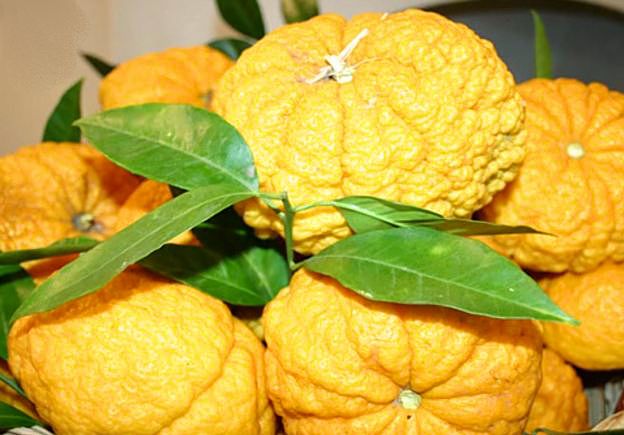Sa Pompìa
The Sardinian endemic fruit
Sa Pompia is a citrus fruit native of Sardinia, with a thick and rough peel, that was born uniquely in the territory of Baronia, between the provinces of Ogliastra and Nuoro.
But, the places, where it is mainly spread, are Orosei, Torpé, Posada and above all Siniscola.
It is here that the cultivation of this fruit, very ancient, developed in the 90s of the last century thanks to the decision of implanting an extensive plantation such that it could allow an unique evolution come from the Sardinian agricultural lands.

Its origins still need other clarifications; indeed, its botanical name Citrus monstruosa has not found a classification yet, by virtue of the indecision of its nature.
A team of academics rank it as a hybrid between citron and lemon; instead, others consider it as a hybrid between citron and grapefruit.
But, the lacking botanical hierarchy of this fruit did not impeded its diffusion shown as previous to its insular cultivation, own and official, by virtue of the use of it for two typical cakes, which preparation is bequeathed orally from many centuries: Sa pompia Intrea and S’Aranzata thiniscolesa.
Typical of the tradition of Siniscola, the first dessert is a candied fruit covered with honey, traditionally donated for a kindness received or in homage during the receptions of sacramental ceremonies, associated with vernaccia or white wine.
Instead, S’Aranzata, supplied for the common use because it is less expensive, thanks to the efficiency of Siniscola about importation and exportation of shelled almonds.
Furthermore, honey was produced by the mojaresos of that place. All the ingredients were useful for the realization of the cake, delivered during the processions of the celebrations of the patron, Saint Giovanni Battista and the Queen Itria.
Another peculiarity of the endemic fruit of Sardinia consists in the prestigious results of some researches made by the researcher of the University of Sassari, Grazia Fenu, specialized in herbal therapy and vegetal care, that at a level of experimentation allowed forward-looking discoveries about the curative properties of the peel of this fruit, such as anti-flammatory, antibacterial and antimycotic.
An innovative research, that begun by the Sardinian researcher, that requests the most fruitful possibility of progression.